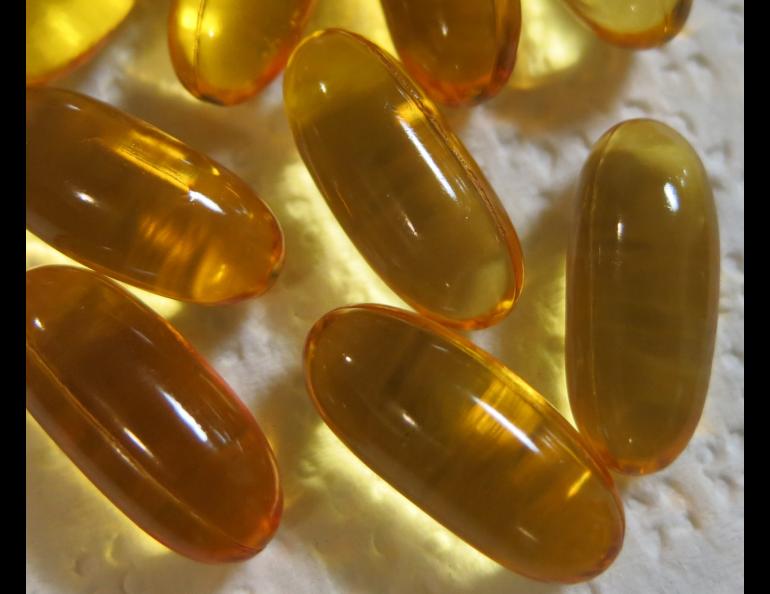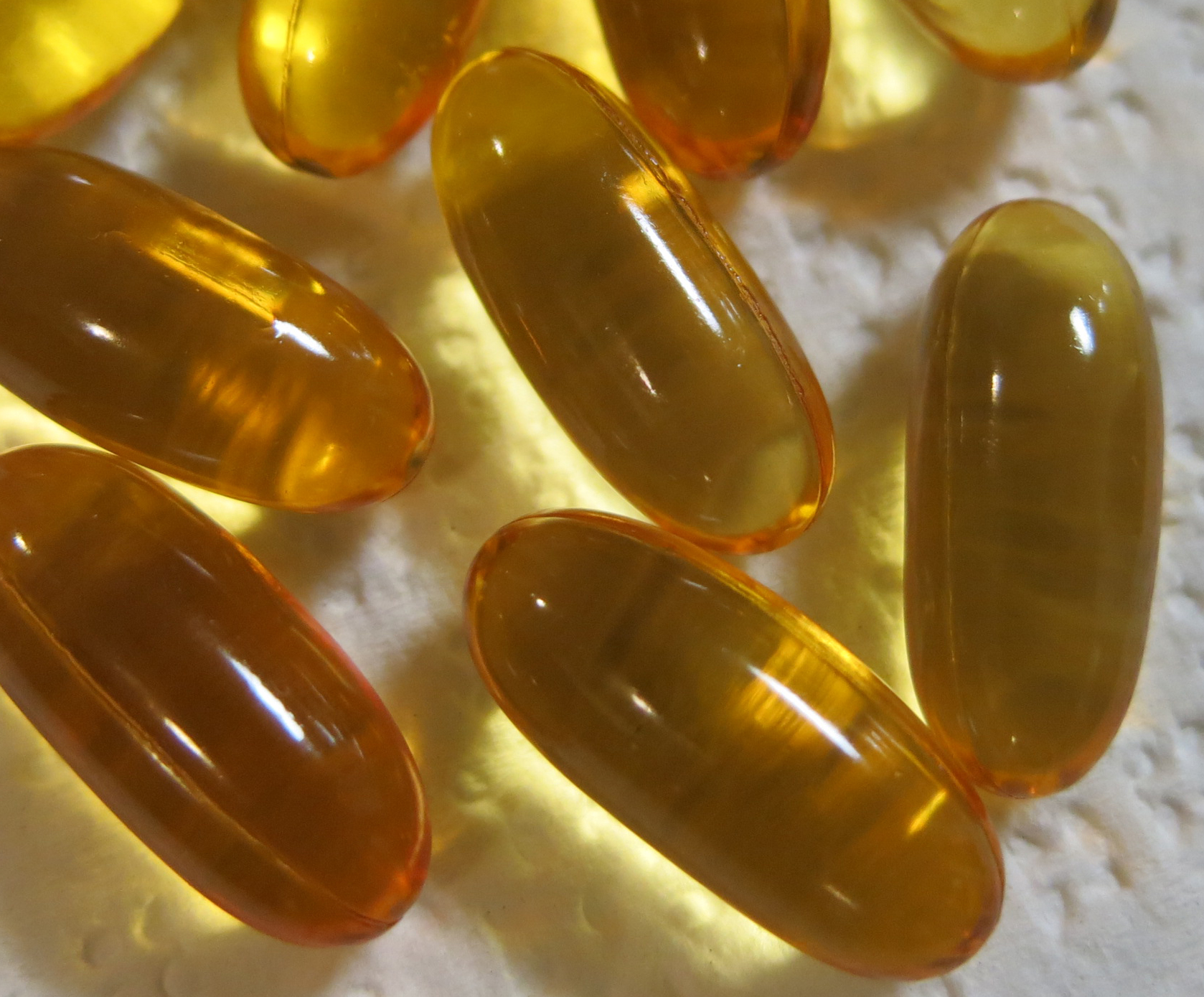

Grinding fish heads for the goodness within
NIKISKI — In a chilly building across Cook Inlet from the white pyramid of Mount Redoubt rest a few dozen plastic-lined cardboard totes filled to the brim with an amber liquid. Each chest-high cube holds about a ton of fish oil extracted this summer from the heads of salmon. It’s a product that would have been lost to the Kenai River if Pat Simpson had not recovered it.
Simpson, 49, is a fisherman-turned-entrepreneur who has for the past few summers purchased salmon heads from fish processors who do business here in this small industrial town north of the Kenai River. Using precision equipment made in Europe, Simpson’s team steams and grinds the heads of pink, chum and red salmon to render a product now available in box stores as 90-count bottles of “Wild Alaskan Salmon Oil” gel tablets.
“We sold all our fish oil the first three years (to companies that put it in capsules and sold it to large retailers),” Simpson said at his Nikiski plant, shut down and unheated for the offseason.
Simpson’s venture with his company Alaska Marine Nutrition is part of a dream to enable fish processors in remote places to use the oiliest part of a salmon — its head — a portion of the fish prized in other cultures but often returned to the ocean in Alaska fisheries.
Simpson first sensed an opportunity to extract and sell fish oil when he was a boy growing up in Cordova. There, as in many rural Alaska places where commercial fishermen catch salmon, processors kept the high-value filets but ground up the carcasses and released the slurry back into the ocean.
With all the recent publicity on the health benefits of the omega-3 fatty acids in salmon oil, Simpson calculated the amount of wild Alaska salmon heads that made their way to fish processors near the mouth of the Kenai River. The numbers worked for him. He approached the owners of the area’s seven fish-processing plants and told them he’d buy their fish heads.
They agreed to fill Simpson’s totes with fish heads during the intense midsummer commercial salmon fishing season. He and his partners, his dad Ken Simpson and Richard Mullins, purchased a fish-processing facility in Nikiski and converted it to hold the specialized equipment used to extract oil from fish heads. Their plant stands amid refineries processing natural gas and oil from Cook Inlet rigs and metal-sided buildings of contractors who support the oil industry.
“We seem a little out of place here,” Simpson said at his 12-acre facility, which includes his processing plant, office and bunkhouse for summer workers.
Simpson grew up working on his father’s tender boats every summer. There, he and his crewmates would motor over to commercial fishing boats, pick up salmon and carry the fish to local processing plants on shore. Sometimes he would travel as far from Cordova as Bristol Bay, a 6-day trip. On those trips, he learned his future was not on the decks of boats.
“I’d be lucky if I wasn’t throwing up half of that,” he said of the long run to Bristol Bay. “To be a successful fisherman, you have to be able to work in lousy weather.”
Simpson looked to another passion, computer science. He went to the University of California at San Diego for college. After having success developing sonar devices for the military and the fishing industry, he returned to Alaska, longing to be connected to the industry he knew best. That’s when he saw there might be a niche on the west side of the Kenai Peninsula. Of the more than 200 fish processors scattered throughout the state, only about half of them recover the fish heads and guts. The fishing industry produces and dumps back to the ocean more than 1 million metric tons of fish waste each year.
He sees a chance for them to get more out of the fish they’re catching. He’s started with extracting fish oil, but wants to produce more from the fish-waste stream, including fishmeal made up of ground-up fish carcasses and bones. That’s in the future for Simpson, but for now he’s pulling out the best fish oil he can and hustling to sell it to distributers in the Lower 48.
Back in his home office in south Anchorage, Simpson pulled a Mason jar of chum salmon oil from a shelf. He opened the jar of viscous, reddish blond liquid and took a swig.
“I wanted to build something I could hold in my hand,” he said. “Wild Alaska salmon oil — that’s our oil. It’s very gratifying to produce.”





